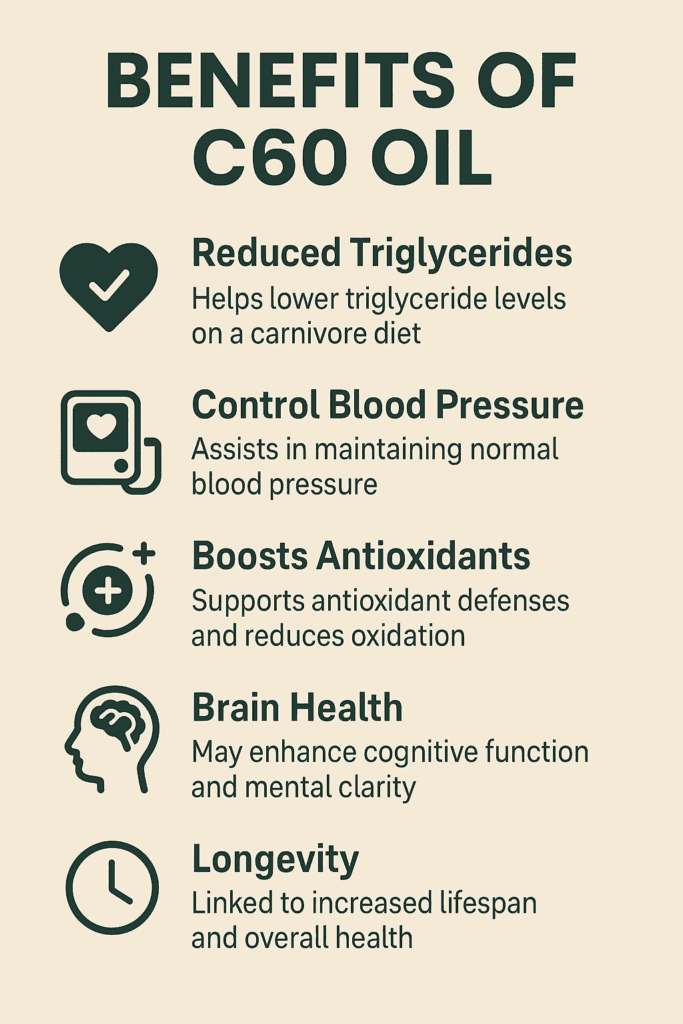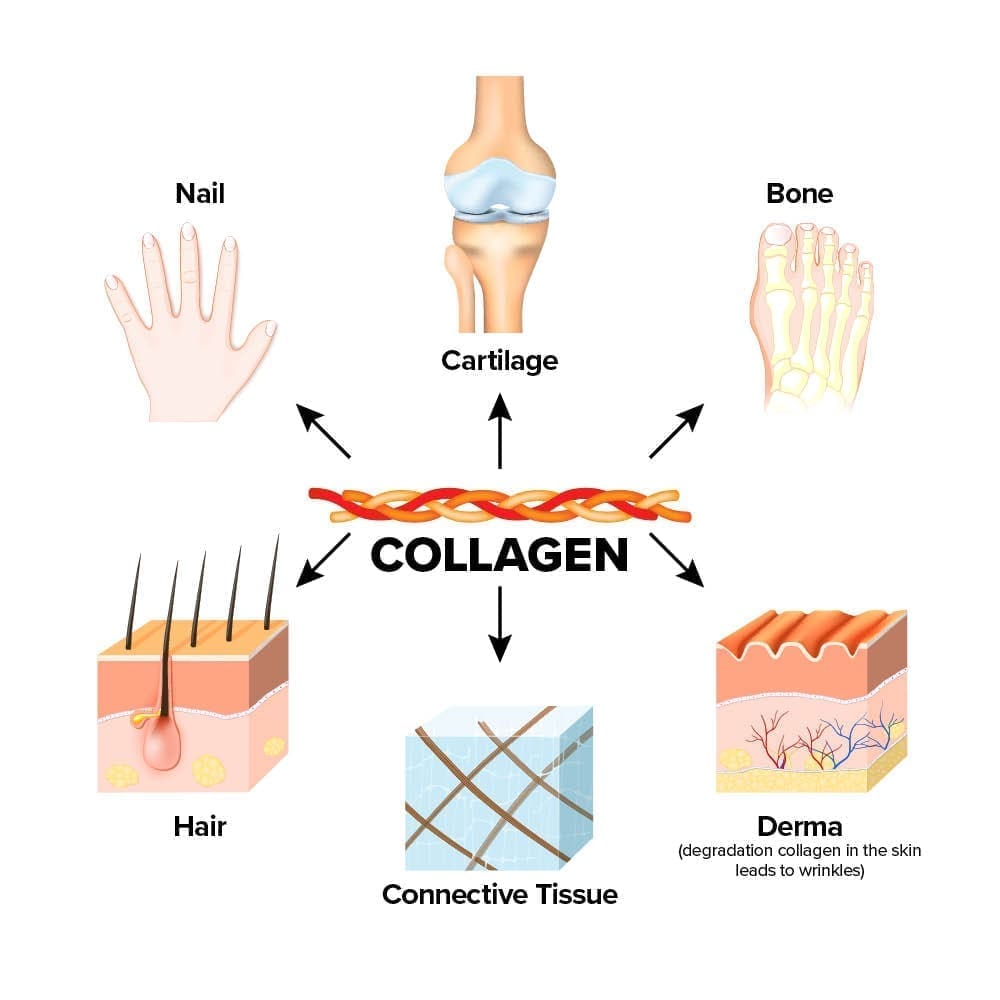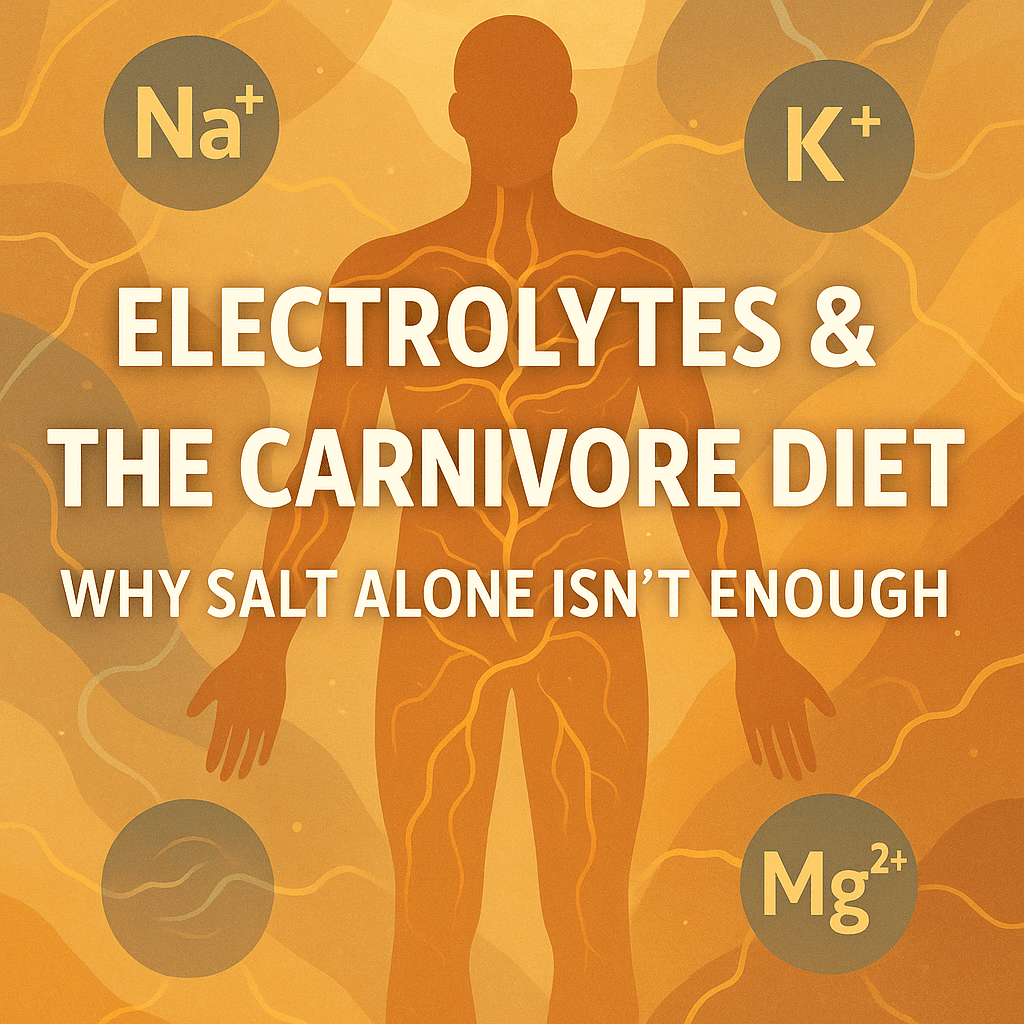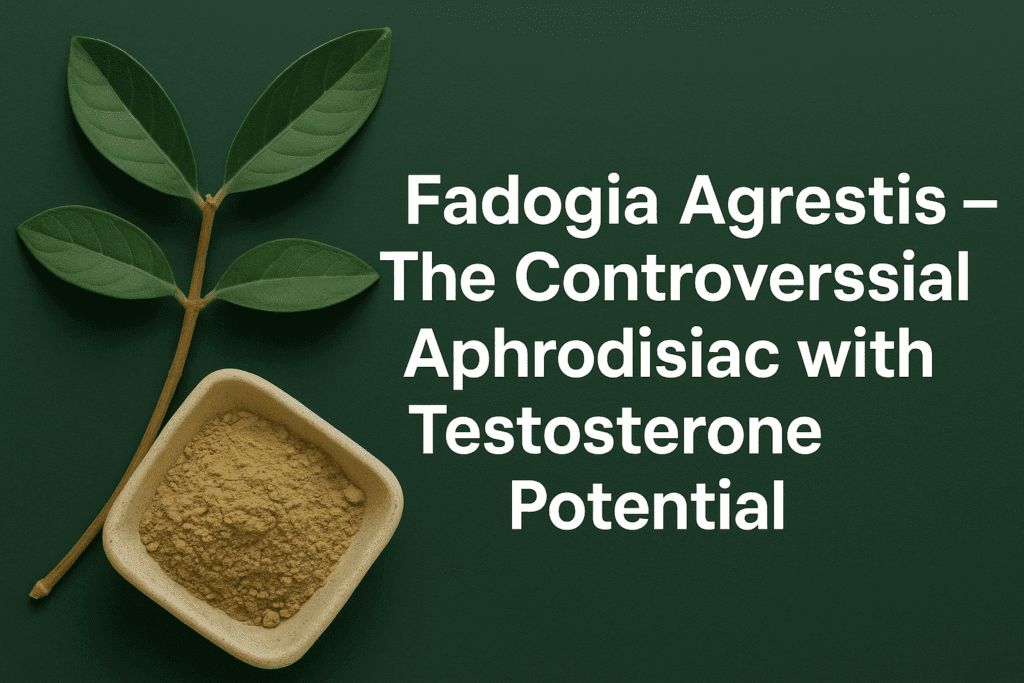🛑 ⚠️ Update: I’ve Paused C60 Use After Reviewing the Science
After diving deep into the research with the help of NotebookLM, I’ve uncovered some serious concerns about how C60 behaves in individuals with cardiovascular injury — like me.
In animal models (rats and mice), C60 has been shown to:

- Worsen heart injury after ischemia-reperfusion events (heart attack models)
- Impair blood vessel relaxation, particularly in animals already prone to atherosclerosis
- Act as a pro-oxidant in certain conditions (especially in the presence of light)
- Show different effects based on delivery method (oral vs. inhaled vs. injected) and even sex of the animal
Even more complex: in zebrafish embryos, C60 acted as a harmful oxidant unless they were kept in the dark — and antioxidant levels in the body dramatically changed the outcome.
This isn’t to say C60 has no value. The original rat lifespan study still stands as fascinating — and there are personal reports of benefits (including mine). But the new evidence suggests C60 may interact very differently in bodies under cardiovascular stress.
🔴 That’s why I’ve chosen to stop using C60 for now. Until we understand more — especially how it behaves in humans with heart issues — I’m playing it safe.
🧪 What I’m Doing Next:
- I’ll continue to track the science and update this article as new studies emerge.
- If you’re healthy and still curious about C60, read the full post below — but know the risks aren’t fully understood yet.
If you have any history of heart problems, I encourage you to:
👉 Watch the deep dive video I commissioned
👉 Speak to a qualified health professional before considering C60.
Below is the article I wrote before this revelation. For people who do not have a heart condition, this may still be a useful supplement.
If you told me a few years ago that I’d be swallowing a molecule made of 60 carbon atoms shaped like a tiny football (or soccer ball, depending on your side of the world), I’d have raised an eyebrow. But here I am — regularly taking C60 oil, and genuinely feeling the difference.
So what exactly is this mysterious molecule, and why do I take it? (on balance).
⚫ What is C60?

C60, short for Carbon 60 or Buckminsterfullerene, is a molecule made up of 60 carbon atoms arranged in a spherical shape — like a tiny nano-cage. It was only discovered in 1985 and won the Nobel Prize in Chemistry in 1996. Yep, it’s legit science.
But beyond being a scientific curiosity, some early research shows that it may have serious potential as an antioxidant and mitochondrial protector.
🧪 The Study That Turned Heads
Back in 2012, a now-famous rat study made waves. Researchers gave one group of rats C60 dissolved in olive oil, and another group plain olive oil.
Before any of the lifespan results made headlines, the original 2012 study was actually designed to test toxicity, not longevity. Because C60 shares structural similarities with benzene — a well-known carcinogen — researchers wanted to find out how safe it really was when taken long-term. They weren’t expecting life extension; they were trying to see if it caused harm. What they found instead was surprising: not only was C60 non-toxic at the tested dose, it dramatically extended lifespan in rats.
Quote from the 2012 Study
C60 is a very promising material for various medical applications, but its toxicity is still a matter of debate. In this context, the aim of this work was to assess the in vivo toxicity of C60.
Baati et al. study was to evaluate the chronic toxicity of C60 dissolved in olive oil. – The results were surprising!
The results?
⚡ The C60 group lived nearly twice as long.
Median lifespan jumped from around 22 months to 42 months — a 90% increase.Even more surprising: they stopped giving C60 at month 17 — and the benefits still continued. The final C60-treated rat lived until month 66, with a median lifespan of 42 months, compared to just 22 months in the control group.
Now, before you start picturing yourself as the next immortal monk, let’s be clear: this was a small animal study. It hasn’t been replicated in humans, and there’s still a lot we don’t know. But it’s compelling enough to keep my curiosity piqued — and my bottle of C60 close by.

🧬 Why It Makes Sense for My Stack
I follow a mostly carnivore-style diet and use red light therapy regularly. Here’s how C60 complements that lifestyle:
🛡 1. Antioxidant Power
C60 is an unusually potent antioxidant — it doesn’t just “donate an electron” like typical antioxidants, it can neutralize multiple free radicals without degrading. That’s huge if you’re trying to reduce oxidative stress without messing with your body’s natural hormesis.
❤️ 2. Cardiovascular Support
Some studies suggest C60 may help reduce triglycerides and stabilize blood pressure — both of which align well with the natural effects of a clean carnivore or keto lifestyle.
⚡ 3. Mitochondrial Boost
It may help improve mitochondrial efficiency, leading to more stable energy throughout the day — something I really notice on the days I take it.

🧠 4. Brain Fog Begone
Because it crosses the blood-brain barrier, it’s also thought to support cognitive clarity. Combined with red light therapy and a clean diet, this trifecta helps me feel focused, alert, and (dare I say) sharper than ever.
🔥 5. Inflammation Control
Even though my carnivore diet already keeps inflammation in check, C60 seems to give it an extra edge, especially after intense training or stressful days.
🥄 How I Take It
I take C60 in extra virgin olive oil, usually in the morning or with my first fatty meal. 2 – 5 ml, once per week. Some people prefer avocado or MCT oil versions — I just go with what feels right and fits my stack.
Important note: quality matters. There’s a lot of junk out there. I only use C60 from trusted brands that follow lab-grade manufacturing and transparency standards. (I’m not here to sell you a brand — just a mindset: be picky.)
Where to Buy C60 (and What to Watch Out For)
Not all C60 products are created equal — and with the growing popularity of C60 oil, there’s no shortage of low-quality or even misleading brands entering the market. Since you’re putting something potentially powerful into your body, it’s worth knowing how to spot the good from the gimmicky.
⚠️ Potential Risks of Poor-Quality C60:
- Impurities or solvents left over from cheap manufacturing
- Low purity C60 (less than 99.9%)
- Fake “black” oils made with charcoal or soot instead of actual C60
- Non-dissolved C60 powder that won’t be bioavailable
Even worse — some products labelled as “C60” contain no C60 at all, just dyed oil.
✅ How to Identify a Legitimate, High-Quality C60 Product:
- 🔬 Lab-Tested Purity (Look for 99.95% or higher)
The gold standard is purity above 99.9%, always verified by independent third-party lab testing. Legit brands will show lab reports right on their site. - 💧 Properly Dissolved in Oil (Not Just Mixed)
C60 is not water-soluble — it must be fully dissolved in oil, not just suspended.
Look for:- Cold-pressed, organic olive oil, MCT oil, or avocado oil
- A rich purple-brown tint (if using olive oil)
- No sludge or visible particles at the bottom
- 🔍 Transparent Branding
Reputable sellers clearly explain:- Their manufacturing process
- Where the C60 is sourced
- How long it’s stirred and dissolved (typically 2+ weeks in darkness)
- 🧪 No Added Fillers or Unknown Compounds
The ingredients list should be simple: C60 (purity %), Organic Olive Oil (or MCT, etc.) - ⭐ Trusted Reviews and Amazon Seller History
Stick with sellers that:- Have verified reviews
- Are not brand-new accounts
- Offer clear customer support and return policies
Armed with this information, check out the latest C60 Suppliers on Amazon. As an Amazon associate, I may earn a small commission from any sales generated through these links. At no extra cost to you.
🇺🇸 Buy on Amazon US
🇬🇧 Buy on Amazon UK
🧂 Final Thought: Curious, Not Convinced
I’m not claiming C60 is a miracle or that it’ll double your lifespan. But for me, it’s a low-risk, high-intrigue addition to a lifestyle already built on regeneration and optimization. It’s like a “what if?” experiment I’m running on myself — with eyes wide open.
Feel free to explore, experiment, or just keep an eye on the research. I’ll keep you posted.
📌 Have questions about my supplement stack or C60 experiences? Drop me a message — I’m always happy to share notes with fellow self-experimenters.
FAQ C60 In Olive Oil
How Red Light Therapy Boosts Collagen
The Science, Benefits, and a Natural Support Product Collagen is the most abundant protein in…
StemEnhance Ultra by Cerule – Natural Stem Cell Support
Support your body’s natural renewal system with StemEnhance Ultra – a cutting-edge blend of blue-green…
Why Electrolytes Matter on a Carnivore or Meat-Based Diet
If you’re eating carnivore or low-carb, you’ve probably heard that salt is important — but…
Why Magnesium Matters on a Carnivore or Meat-Based Diet
If you’re following a carnivore or heavily meat-based diet, you’re probably getting more protein, iron,…
Exploring Fadogia Agrestis The Controversial Aphrodisiac
With Testosterone Potential Introduction Fadogia agrestis is a lesser-known herbal supplement that has recently shot…
Tribulus Terrestris
The Classic Libido Booster and Herbal “Pump” Supplement Introduction Tribulus terrestris, commonly known as puncture…
If you enjoyed this article, please consider following me on Facebook and/or Subscribing to my Substack (its free).
📚 References
The information above has been synthesized from a range of scientific studies and expert analyses.
- C60 and Lifespan Extension in Rats
Baati, T., et al. (2012). The prolongation of the lifespan of rats by repeated oral administration of [60]fullerene. Biomaterials.
🔗 PubMed - Antioxidant Properties of C60
Andrievsky, G.V., et al. (2013). Possible Mechanisms of Fullerene C60 Antioxidant Action.
🔗 PMC Article - Anti-inflammatory and Antioxidant Effects of Liposoluble C60
Shinohara, N., et al. (2022). Anti-inflammatory and antioxidant effects of liposoluble C60 at the cellular level.
🔗 Tailor & Francis Online - Neuroprotective Potential of Water-Soluble C60 Fullerenes
Shinohara, N., et al. (2015). Cortical and hippocampal EEG interplay in an amyloid-infused rat model treated with water-soluble C60 fullerenes.
🔗 PubMed - C60 Fullerene Reduces Oxidative Stress in Neurodegenerative Models
Shinohara, N., et al. (2021). C60 Fullerene Reduces 3-Nitropropionic Acid-Induced Oxidative Stress in Rats.
🔗 PMC Article - Nrf2 Activation by Polyhydroxylated Fullerene
Shinohara, N., et al. (2014). Polyhydroxylated fullerene attenuates oxidative stress-induced cytotoxicity via Nrf2 activation.
🔗 PMC Article - C60-Based Compounds Inhibit SARS-CoV-2 Spike Protein Interaction
Patino-Alonso, J., et al. (2024). C60-based Multivalent Glycoporphyrins Inhibit SARS-CoV-2 Specific Interaction with the DC-SIGN Transmembrane Receptor.
🔗 PubMed - Interactions of C60 Fullerene with Microplastics and Emerging Contaminants
Williams, T., et al. (2020). Interactions of emerging contaminants with model colloidal microplastics, C60 fullerene, and natural organic matter.
🔗 RSC Publishing - Effects of C60 Fullerene Nanoparticles on Soil Bacteria and Protozoans
Shinohara, N., et al. (2008). Effects of C60 fullerene nanoparticles on soil bacteria and protozoans.
🔗 PubMed - The Rise and Fall of Nanobacteria
Young, E. (2008). The Truth about Nanobacteria. Scientific American.
🔗 Pubmed





